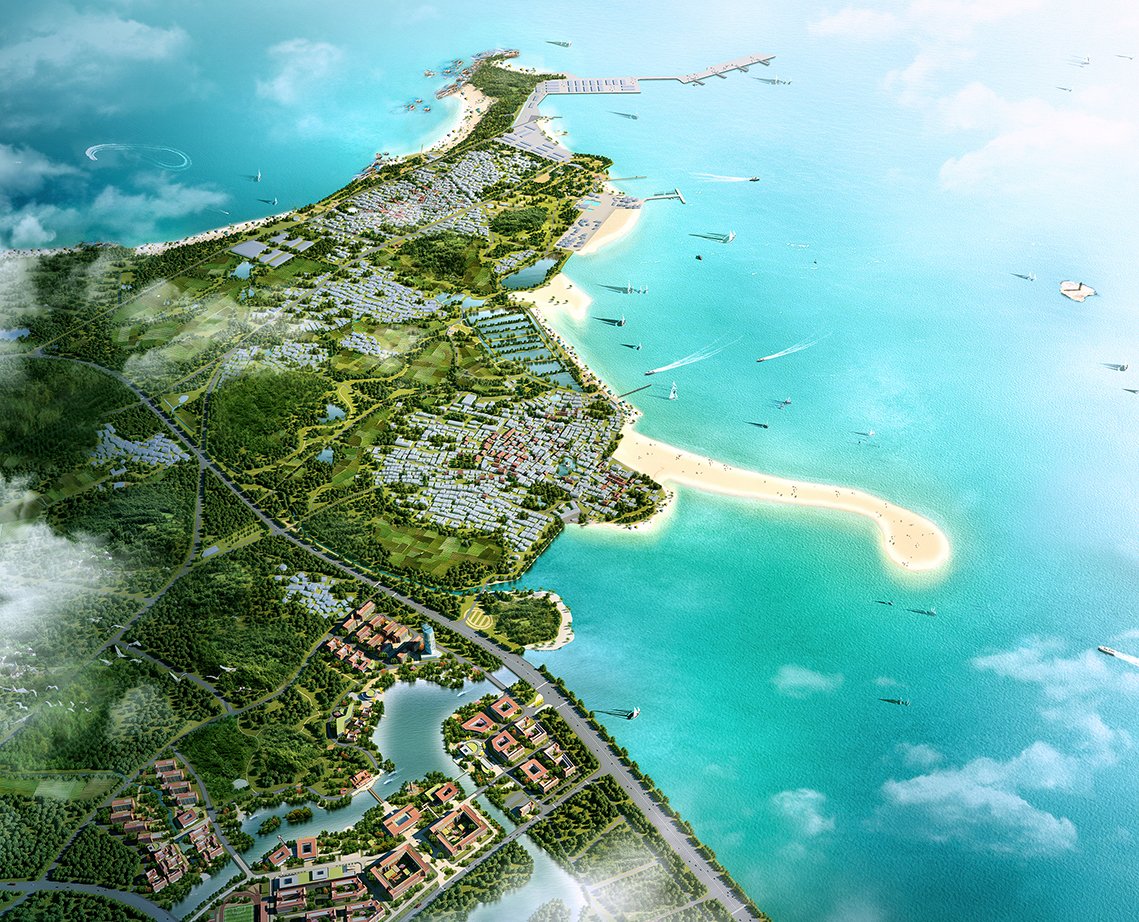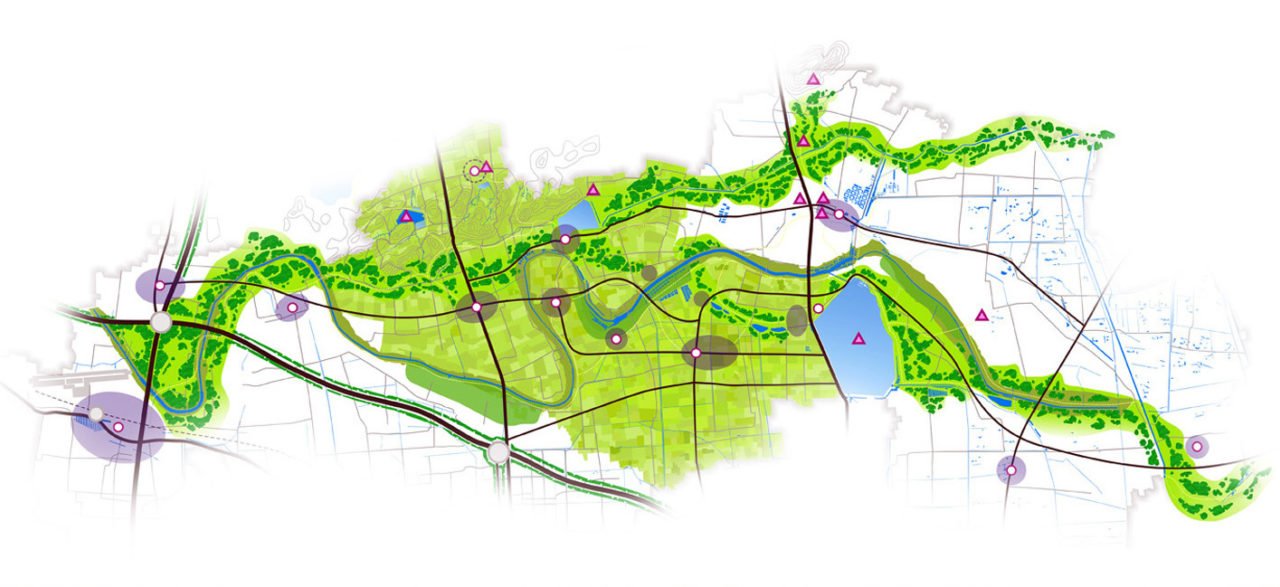Seaside Garden Town
It seems that in the 21st century we have even more challenges, from tackling climate change and biodiversity decline to an ageing population. Dr Wei Yang, influential thought-leader and a powerful advocate for climate action and nature-based solutions, advocates a people centric approach to community and environment. It is fundamental to create a balanced system for people, nature and society to exist in harmony. When we are dealing with so many different complex issues, we need to take a simple approach, with the main focus being that without nature we cannot survive. We need a mindset change when it comes to civic planning especially.
As human beings we have taken from nature and not given back to nature, and Dr Yang argues, as the Garden City Principle celebrates, we are missing a trick. There is a misunderstanding of garden cities. When we say “garden cities” people think, lots of trees. But it is a sophisticated, yet simple, social economic model. Using a land value capture model. Through development the land value increases and that can be captured providing social economic support to the community.
Historic Yellow River Development Strategy
Dr Yang discusses how state run Social welfare can be a very top down approach and not necessarily what the community needs and there is a frustration in general with the Town Planning profession. Dr Yang opens our eyes to the fact that planning is in fact multi-disciplinary, not only is it an applied science discipline but it is also an art discipline. This highly sophisticated profession cuts across so many different disciplines, but, she argues, we need to ensure we maintain compassion and selflessness when we are planning our towns and cities. In fact, town Planners should be Doctors for Mother Earth
“As planners we can ensure we bring the beauty of nature and wildlife corridors into cities. At the moment, our approach to Cities, is almost like they are cancers, solid concrete blocks. That’s why we have so many troubles, mental and physical health issues, if we do bring nature in, we can treat the whole environment in a totally different way.”
She tells us about the first garden city Letchworth which used that approach, and we can see that the city is thriving. There is connectivity to local agricultural land. It is called a “Garden city” not referring to the “gardens” as in our households, but the agricultural belt, and of course this relates to local food production.
Dr Yang also discusses the 15-minute walkable neighbourhood, and says in the 21st Century garden city you have that walkability from your house to work on a daily basis bedded into the very fabric of the city design. The Garden City is a social network, they are Social Cities.
Milton Keynes example uses garden principle on a larger scale with flood attenuation and wildlife corridors. The parks Trust, manage the land using the land value capture model to look after the green space. About ¼ of the land is green. The city generates income from the premises on the land and they use this income to look after the green space professionally. Self-sustaining. We need this long-term integrated approach when it comes to town planning.
Accessibility to green space affects our behaviour and physical and mental wellbeing. Generally expensive areas are leafy, but Green space is important to everyone. If we remember the pioneer Octavia Hill who helped protect green spaces for those from disadvantaged backgrounds to enjoy green space. It should be accessible to everyone and we should continue this in town planning. 74% of children only play outside. When you compare this to Prisoners who by law have to have at least 1 hour a day outside, children have less freedom than prisoners! If we want the next generation to protect nature we need them to understand it, otherwise they won’t. Let’s bring garden cities right to someone’s doorstep, improve biodiversity, and also improve the porosity of the earth. Let’s have a Place-based approach, work with different professions and maintain a multidisciplinary approach.
Nothing is more powerful than nature. There are no age or gender differences in planning, if we believe something we can just work on it and we can all achieve something collectively…
Dr Yang is an influential thought leader and a powerful advocate for climate action, nature-based solutions, health and well-being, and social equality. Wei was named as a Net Zero Hero by Digital Leaders in 2022.
https://www.weiyangandpartners.co.uk/about/team/dr-wei-yang
One of the brilliant articles written in our Cities issue of The Journal of Biophilic Design was by Dr Wei Yang (you can purchase a copy directly from us at the journalofbiophilicdesign.com or Amazon. To buy a copy of The Journal of Biophilic Design visit our website
www.journalofbiophilicdesign.com or from Amazon. If you like our podcast and would like to support us in some way, you can buy us a coffee if you’d like to, thank you x
Credits: with thanks to George Harvey Audio Production for the calming biophilic soundscape that backs all our podcasts.
Did you know our podcast is also on Audible, Amazon Music, Spotify, iTunes, YouTube, Stitcher, vurbl, podbay, podtail, and most if not all the RSS feeds?
Facebook https://www.facebook.com/journalofbiophilicdesign/
Twitter https://twitter.com/JofBiophilicDsn
LinkedIn. https://www.linkedin.com/company/journalofbiophilicdesign/
Instagram https://www.instagram.com/journalofbiophilicdesign




